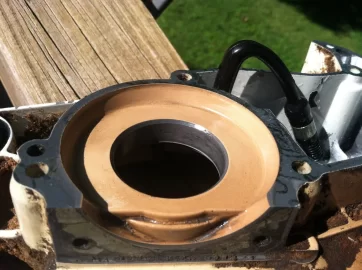Just throwing an old farmer method out for tightening up a bearing surface:
Saw that mentioned in an AS thread about a spun bearing. One hitch that comes to mind is that I'd still have to stop the air leak around the bearing. JB weld?
Other than some bench time, you got nothing to loose.
I don't mind the bench time; it's the $100 top-end kit that I'd rather not waste.


 If MM or Dex said "don't do this" - I would heed their warning.
If MM or Dex said "don't do this" - I would heed their warning.

 . That's exactly how I wound up with two MS460s!
. That's exactly how I wound up with two MS460s!